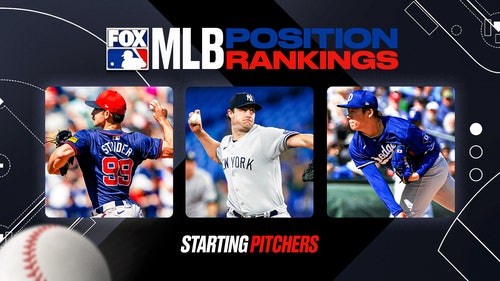
Now's time for Harper to be humbled
With less than 24 hours left before baseball’s amateur signing deadline, I had two pieces of advice for Bryce Harper.
1. Sign.
2. Throw away the eyeblack. For good.
One down, one to go.
Just before Monday's midnight ET deadline, the Nationals announced that they have reached an agreement with the top overall draft pick on a $9.9 million, five-year contract. The figure doesn't approach the $15.1 million that Stephen Strasburg received from the Nationals one year ago, but that's not important.
While another season of junior-college baseball at the College of Southern Nevada would have been swell and all, it’s not quite as appealing as becoming a gazillionaire at 17.
And now that emcee Scott Boras has extracted the last verbal nod from Nationals general manager Mike Rizzo, everything will change for Harper.
He will need to try to be like the other players at the instructional league this fall, even though that isn’t possible.
There, and only there, the effort is what matters.
Let’s make this clear: The hype surrounding Strasburg last year was more easily justified, because he was closer to the majors.
Strasburg had already pitched in the Olympics. He was the best collegiate pitcher in the country at San Diego State. As of this date last year, he was 21 and nearly ready to succeed in the big leagues.
In fact, Strasburg is older than several players who debuted in the big leagues last season: Madison Bumgarner, Rick Porcello and Elvis Andrus.
So, many observers assumed that Strasburg’s stay in the minor leagues would be short. It was. He debuted on June 8 amid unprecedented hype. And other than some barking in his shoulder, he has delivered.
Harper is different. Hitters need swings. Even if he debuts at 19 — like Ken Griffey Jr. and Alex Rodriguez, prodigies to whom he has been compared — he will spend roughly two years in the minor leagues.
Three years ago, Boras told the Kansas City Star that Porcello and Mike Moustakas — his clients, naturally — were “(once-in-a) decade-type players.” Porcello lived up to that billing last year but now has a 5.53 ERA. Moustakas is batting .265 at Triple-A and has yet to reach the majors.
That’s not to suggest that either Porcello or Moustakas will fall short of his potential. I’m merely pointing out that the path to stardom is not always linear, even when projections seem certain.
So while Harper’s talents merited that cover story in Sports Illustrated, he will have to ride the buses with Hagerstown or Potomac next year. Just like everyone else.
It’s going to be more complicated and less scripted than his experience at the College of Southern Nevada this season. Harper, a Las Vegas native, lived with his parents. His brother was on the team. Harper was quite comfortable in his surroundings. The numbers say so: a .443 batting average, 31 home runs and 98 RBIs in 66 wooden-bat games.
But his moments of immaturity attracted almost as much attention. He was ejected and suspended for arguing with an umpire during the Junior College World Series. Earlier in the season, he was tossed for taunting the other team.
And then there is the excessive eyeblack, caked on his face in a way that suggests, "Look at me. I’m tough."
Harper needs to discard that, for reasons more symbolic than practical. The penchant for showing up opposing players and umpires needs to go, too.
The safety net of a nurturing locker room will be gone, replaced by an atmosphere in which relievers making $10,000 per year will want to show that the millionaire bonus baby isn’t as good as everyone says.
I respect Harper’s decision to forgo his final two years of high school, even if I didn’t agree with it. But this is one moment where another year of maturity might serve him well.
Does he know to play it low-key when he first reports to instructional league?
Does he understand that he will be expected to pick up the dinner tab for teammates making baseball’s minimum wage?
Can he fit in with 21-, 22-, and 23-year-olds who will be at least a little jealous of his talent?
Is he ready for the mind games that opponents will try?
“Being a high-profile draft pick presents definite challenges for the player, his teammates and the organization,” said Tim Belcher, the No. 1 overall pick in 1984 — and one of Boras’ first clients.
“It’s made easier when everyone keeps it as real as possible. In other words, the player must not get consumed by the hype, the organization must control the hype, and his teammates must try and ignore it.”
Good luck, I say, to one and all.










